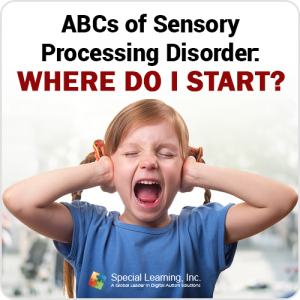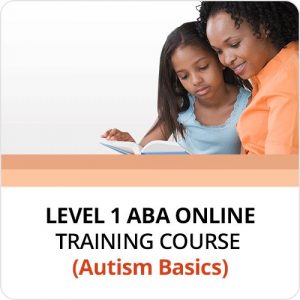Incidental Teaching
The most distinctive feature of incidental teaching — a characteristic that separates it from all other forms of applied behavior analysis-based therapies for autistic children — is that all interactions must be initiated by the child. This may seem difficult given that children diagnosed with autism spectrum disorder, or ASD, are known for their unwillingness to initiate social dialogue as well as their lack of motivation to learn or interact with others.
However, those two common behaviors of autistic children are precisely why incidental teaching was designed as child-initiated therapy. The initial concept of incidental teaching was originally developed by Risley and Hart in the 1970s (Risley & Risley, 1978) and then expanded as part of the Walden Project under the supervision of Dr. Gail McGee and her colleagues at Emory University in the 1990s (McGee, Morrier, & Daly, 1999). If a teacher takes advantage of opportunities to encourage self-initiation and overcome poor motivation in the process, the child will develop two of the most critical skills necessary to further his or her progress in the future.
But in order to do this, the teacher needs to create an environment that presents plenty of those opportunities, or “teachable moments” to the child. To start, the teacher, parent, or therapist will find it necessary to observe the child in his or her natural environment. It is important to notice what things the child likes to do and what objects within the environment the child enjoys most. It is also advisable to pay attention to what the child’s typical behaviors are. Take the time to observe which inappropriate behaviors most need to be reduced or eliminated, and the child’s strengths and how they can be used to help her feel good about her abilities whenever she becomes discouraged.
After taking note of what things in the environment most interest the child, prepare the working space for incidental teaching exercises by putting as many of those items as possible in the area, but just out of reach of the child (For example, on a shelf or table that is slightly higher than the child can reach). Make sure they are easily visible to the child.
The next step is simple. Wait. If you’ve done the job up to now well, it shouldn’t be long before the child tries to reach for something that has caught her interest. This is it: your first “teachable moment” under the incidental teaching method. It is time for your first prompt, known as a Level 1 Prompt. Here’s what you do: Place your hand over the child’s and, yes, wait again. Remember, the goal is child self-initiation. The child started the exercise or “teachable moment” by reaching for the item in the manner typical of an autistic child, instead of asking for it. Now you want the child to initiate dialogue if at all possible. Just hold your hand over the child’s and look expectantly for as long as 30 seconds.
If the child has not responded by that time, use a Level 2 Prompt. One of the great things about incidental teaching is the number of scripts you need to learn. Here is the standard Level 2 Prompt, which can be used in almost every case: “What do you want?” Once you’ve issued your Level 2 Prompt, wait again, looking expectantly. Hopefully, the child will answer with a verbalization: “Ball” or “Doll,” for example. Now your goal is for the child to elaborate. “What color ball?” or “What kind of doll?” What you want is to have the child interact with you verbally at a slightly higher level than the child would have naturally.
If the child answers with any elaboration at all, such as “Red ball” or “Baby,” say, “That’s right, red ball,” and let the child have the item. You have just had a very successful incidental teaching exchange.
If, on the other hand, the child still will not verbalize, you need to go to a Level 3 Prompt. Look at the object for a moment, then look back at the child and ask: “What is this?” Wait an ample but appropriate amount of time, and if the child still will not answer, pull out the heaviest weapon in your incidental teaching arsenal: a Level 4 Prompt.
Look at the child and enunciate slowly and clearly, and say what you want the child to say: “Red ball.” You have just modeled the behavior you are expecting from the child. At this point, the child is likely to mimic you, something many autistic children are very good at, and say, “Red ball.” Now you can say, “That’s right, red ball,” and let the child have the ball. Your first exchange was still successful.
But if the first exchange does not end in verbal elaboration, do not worry about it and DO NOT let the exchange go on too long. Incidental teaching is by design very brief, and it must be enjoyable for both you and the child. If the exchange is taking too much time or if it is becoming unpleasant for either of you, STOP and redirect the child to another activity. Wait for your next opportunity for a “teachable moment.”
If the exchange was successful and the child elaborated verbally about what she wanted, you have accomplished a lot; probably more than you realize. You were able to get the autistic child you are working with to feel motivated and initiate an interaction with you, something most autistic children do not do easily, and you did it in a way that will further motivate the child to repeat this kind of exchange again. Research has shown that motivation and self-initiation are two of the biggest deficits in children with ASD, and they hinder the ability to develop necessary learning, functioning, and social skills. You just started the child on the road to overcoming these major hurdles. That’s something to rave about.
The verbal elaboration was another key achievement of the exercise. Learning to elaborate is a critical part of the learning process for any child and a major challenge for most autistic children. As you do more of these exercises, following almost exactly the same formula, you will be able to hold dialogues of perhaps 30 seconds to a minute in which you ask questions about the object of the exercise and the child will answer them. As a result, the child will begin to generalize the concept of elaboration and do it more easily in a wider variety of circumstances.
Another benefit of the exercise is that it is performed in a natural setting or environment, and the exchange occurs as the child goes about her normal daily routine. Concepts taught in the child’s natural environment are easier to generalize into other settings such as school or work. The ability to teach in this manner is easier and more enjoyable for both the child and the teacher.
That is incidental teaching in a nutshell. Although we have made it sound simple and easy — and for the most part it is — when you are actually in a “teachable moment” it is not always easy to remember how to take proper advantage of it. That’s where careful planning plays a crucial role. Before each opportunity to use incidental teaching in a particular setting, think carefully about what “teachable moments” might present themselves, what you can do to encourage as many of those moments as possible, and what things you can say as Level 3 Prompts that will generate interesting elaboration from the child. Try to find opportunities for incidental teaching in as many settings as possible, such as picnics, parties, and visits to the local grocer.
Although you will achieve the greatest verbal elaboration with Level 3 Prompts (“Yes, that’s right, blue ball. What color is the other ball?” “Yes, very good, red. What color is Jenny’s ball?”), it is important to always use the lowest level prompt necessary to get the desired response. Never start an exercise with a Level 3 Prompt.
This is merely an introduction to incidental teaching and is not intended to be a full guide to using the technique. If you intend to use incidental teaching with your child, you will find there is a lot more to learn, especially when applying incidental teaching professionally as part of applied behavior analysis therapy. For a trained therapist, extensive data collection and reporting are essential parts of the ABA process, since they create feedback that helps gauge progress and establish goals.
While textbooks have been written about incidental teaching and there are plenty of resources to help you learn more right here at Special Learning. If you find that incidental teaching is effective with your child, you will probably want to study it further; but for now, try the exercise we have shown to you here and see what happens. If your child responds well and finds the technique enjoyable, you may want to make incidental teaching an integral part of your child’s treatment.
References:
McGee, G. G., Morrier, M. J. & Daly, T. (1999). An incidental teaching approach to early intervention for toddlers with autism. JOSH, 24(3), 133-146.
Risley, B. M. & Risley, T. R. (1978). Promoting productive language through incidental teaching. Education and Urban Society, 10, 407-429.
Copyright © by Special Learning Inc. All right reserved.
No part of this article may be reproduced in any manner whatsoever without written permission except in the case of brief quotations embodied in critical articles and reviews. For information, contact Special Learning Inc., at: contact@special-learning.com








